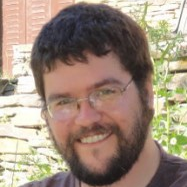Ultrasonic Imaging and Sensors
A special issue of Sensors (ISSN 1424-8220). This special issue belongs to the section "Sensing and Imaging".
Deadline for manuscript submissions: closed (21 October 2021) | Viewed by 49450
Special Issue Editors
Interests: ultrasound imaging for medical and industrial applications; beamforming methods and hardware implementation; real-time ultrasound image processing
Special Issues, Collections and Topics in MDPI journals
Interests: ultrasound electronics; spread spectrum signals; time of flight estimation; signal processing
Special Issues, Collections and Topics in MDPI journals
Interests: piezoelectric transducers; piezoelectric materials; composite materials; ultrasound propagation; materials characterization; inverse problem solution; complex optimization
Special Issues, Collections and Topics in MDPI journals
Special Issue Information
Dear Colleagues,
Ultrasound imaging is one the most extended diagnostic techniques in medicine, and one of the most demanded tools for non-destructive evaluation in industry. Although it is a well established technique, scientific and technical advances keep pushing the field beyond its frontiers, not only with regard to image quality and frame rate, but also with new applications and imaging modalities. It is, indeed, an amazing research field, which involves topics varying from materials science for transducers manufacturing and wave propagation physics to high-end analog and digital electronics and signal and image processing algorithms.
This Special Issue is open to new research and review papers in any of these fields, including, but not limited to:
- New materials for ultrasound transducers
- Transducer design for NDT and medical applications
- Physical acoustics
- Analog and digital ultrasound electronics
- New beamforming methods and imaging modalities
- New NDT and medical ultrasound applications
- Ultrasonic image processing and AI techniques.
We highly appreciate your contribution to this Special Issue, in which we hope to give a comprehensive overview of recent advances in all fields of ultrasonic imaging.
Dr. Jorge Camacho
Dr. Linas Svilainis
Dr. Tomás Gómez Álvarez-Arenas
Guest Editors
Manuscript Submission Information
Manuscripts should be submitted online at www.mdpi.com by registering and logging in to this website. Once you are registered, click here to go to the submission form. Manuscripts can be submitted until the deadline. All submissions that pass pre-check are peer-reviewed. Accepted papers will be published continuously in the journal (as soon as accepted) and will be listed together on the special issue website. Research articles, review articles as well as short communications are invited. For planned papers, a title and short abstract (about 100 words) can be sent to the Editorial Office for announcement on this website.
Submitted manuscripts should not have been published previously, nor be under consideration for publication elsewhere (except conference proceedings papers). All manuscripts are thoroughly refereed through a single-blind peer-review process. A guide for authors and other relevant information for submission of manuscripts is available on the Instructions for Authors page. Sensors is an international peer-reviewed open access semimonthly journal published by MDPI.
Please visit the Instructions for Authors page before submitting a manuscript. The Article Processing Charge (APC) for publication in this open access journal is 2600 CHF (Swiss Francs). Submitted papers should be well formatted and use good English. Authors may use MDPI's English editing service prior to publication or during author revisions.
Keywords
- ultrasound imaging
- ultrasound beamforming
- ultrasound transducers
- ultrasound applications
- ultrasound electronics
- echograpy
- non-destructive evaluation
- artificial intelligence
- image processing
Benefits of Publishing in a Special Issue
- Ease of navigation: Grouping papers by topic helps scholars navigate broad scope journals more efficiently.
- Greater discoverability: Special Issues support the reach and impact of scientific research. Articles in Special Issues are more discoverable and cited more frequently.
- Expansion of research network: Special Issues facilitate connections among authors, fostering scientific collaborations.
- External promotion: Articles in Special Issues are often promoted through the journal's social media, increasing their visibility.
- e-Book format: Special Issues with more than 10 articles can be published as dedicated e-books, ensuring wide and rapid dissemination.
Further information on MDPI's Special Issue polices can be found here.








